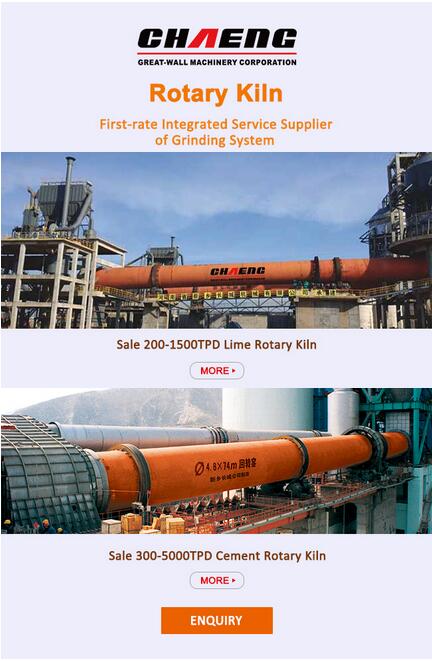
News Date:2017-11-13 14:06:22
Modern chaeng energy saving lime kiln compared with the traditional rotary kiln with environmental protection, energy saving; mechanization, a higher degree of automation advantages, it can make full use of cheap energy, in particular, and can use the original pollution of the environment as the main energy, turning waste into treasure, not only The environment can be protected, and it produces lime,it not only good quality and low cost, the enterprise economic benefits will be significantly increased.

First, the type of lime kiln
1, according to the fuel points: a mixed kiln (ie, burning solid fuel, coke, coke powder, coal, etc.) and gas kiln (ie, 2 blast furnace gas, coke oven gas, calcium carbide tail gas, gas furnace, natural gas, etc.).
3, according to kiln shape: a vertical kiln, rotary kiln, sleeve kiln, double kiln, double-beam kiln and so on.
4, according to the operating pressure points: a positive pressure operation kiln and negative pressure operation kiln.
Second, the basic principles and thermal process
Limestone is the main component of calcium carbonate, and lime composition is mainly calcium oxide. The basic principle of burning lime is by means of high temperature, the limestone in the decomposition of calcium carbonate into calcium oxide and carbon dioxide.
Reaction style
CaCO3 = CaO + CO2-42.5 Kcal
Process: limestone and fuel into the lime kiln (if the gas fuel through the pipeline and burner into) preheated to 850 ℃ began to break down to 1200 ℃ to complete the calcination, and then after cooling, unloading the kiln. That is to complete the production of lime products. Different kiln shapes have different preheating, calcining, cooling and unloading methods. However, there are several principles of the process is the same: high quality raw materials, lime quality is good; fuel calorific value is high, the number of consumption less; limestone particle size and calcination time is proportional to; lime activity and calcination time, calcination temperature is inversely proportional.